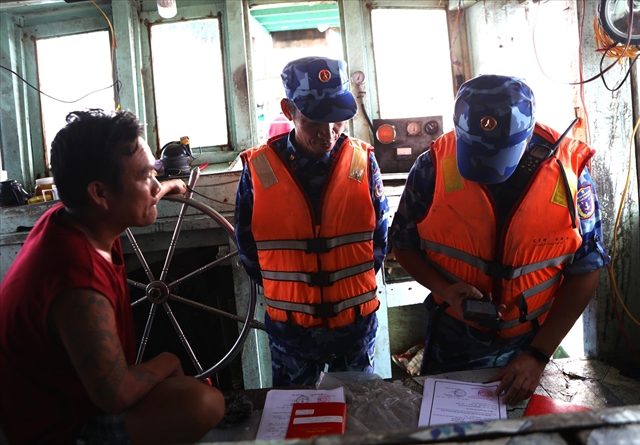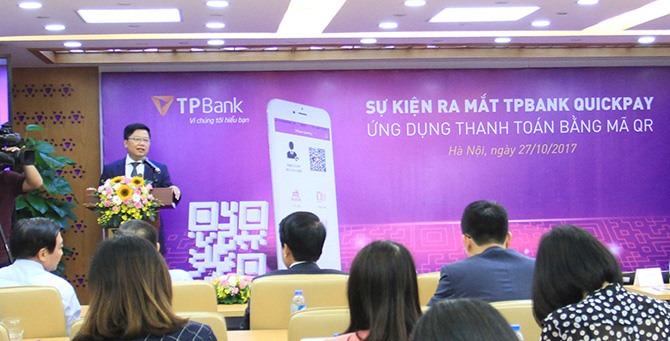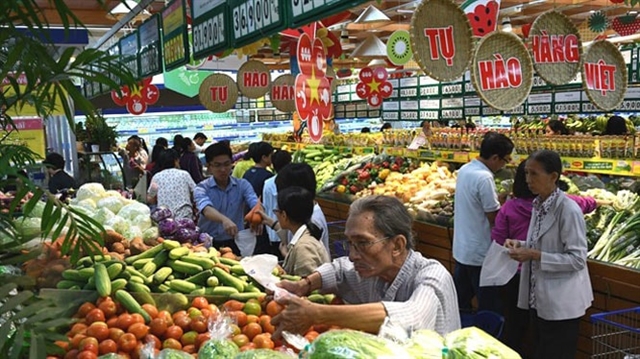 Economy
Economy

Vietnamese banks are scrambling to adopt the quick response (QR) payment system amidst rumours that major Chinese players AliPa and WechatPay are looking to set up shop in the country.
 |
TPBank recently became the first in the Vietnamese banking system to launch its own payment and money transfer app, QuickPay.– Photo vnreview.vn |
HÀ NỘI – Vietnamese banks are scrambling to adopt the quick response (QR) payment system amidst rumours that major Chinese players AliPa and WechatPay are looking to set up shop in the country.
The QR application allows payments and cash transfers by mere scanning of codes and using fingerprints or a personal password to authenticate the transaction.
Although the State Bank of Việt Nam (SBV) has not confirmed the entry of the Chinese firms, the trend has already been recognised in Viet Nam and many banks are joining the fray
TPBank recently became the first in the Vietnamese banking system to launch its own payment and money transfer app, QuickPay.
Prior to TPBank, seven other banks - Vietcombank, VPBank, ACB, Sacombank, OCB, HDBank and MaritimeBank – had joined hands with fintech firm Moca to offer the service.
It is clear that Vietnamese banks are turning around to adopting non-touch payment systems, especially those using QR codes in a big away.
Experts say this move is not just to catch up with the non-touch payment revolution in the world, but one that seeks to prepare for strong challenges posed by the likely entry of AliPay and other popular services in China.
The number of transactions carried out through QR code in China, mainly through AliPay and WechatPay, are valued at around US$1.65 billion a year, according to online newspaper infomoney.vn.
QR codes are everywhere in China, around beggar’ necks, street vendor trolleys, retail stores, supermarkets and large trading centres.
When the Vietnamese central bank Governor issued in September a plan for developing the POS (points of sale) system, mentioning QR payment, it was taken as the Government fostering non-cash payments.
The SBV also agreed to set up a QR code subcommittee last month.
Observers have warned that if Viet Nam does not respond in time, the market share of both Vietnamese banks and Fintech will be fully taken over by the two Chinese giants.
The biggest challenge for Vietnamese banks is to change consumer habits of cardholders and expand the merchant network.
If it enters Việt Nam, AliPay can boom quickly, thanks to the users of large e-commerce network, Lazada, which was acquired by Alibaba last year.
Despite concerns over AliPay’s landing in Việt Nam soon, many banks are optimistic that joining the game with the giant would change the overall habits of Vietnamese consumers, opening up opportunities for banks and fintech firms.
Nguyễn Hưng, TPBank general director, said that unlike the swiping of cards at POS, payment by QR code is simple and easy to use.
Therefore, the potential to widely apply this form of payment in daily life is very large, helping save costs for the whole society, he said.
Customers who have phones with QR payment can shop, go to restaurants, coffee and drink tea or coffee taxi without cash or cards, he said.
A market survey by Visa, a global payment technology company, found that by the end of last year, over 62 per cent of respondents said they prefer electronic payments over, other traditional ways.
Meanwhile, in a recent talk with the media, Arn Vogels, MasterCard’s country manager for Indochina, said that a company survey found 60 per cent of Vietnamese youth are willing to adopt QR payment.
The demand for QR code payment will increase as the technology is widely deployed, and will be applied to bill payments and even cash on delivery, Hung said. - VNS




